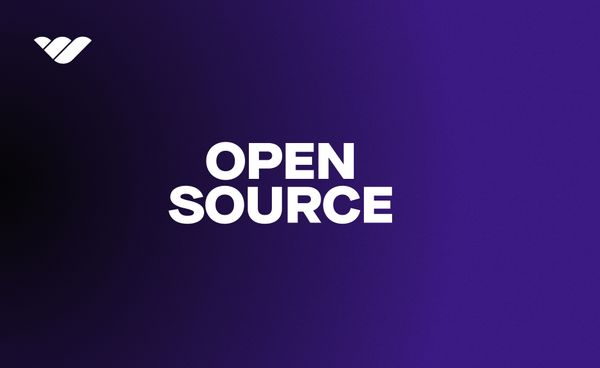What is MongoDB? MongoDB is a cross-platform, document-oriented database program that stores data in JSON-like documents with dynamic schemas. It is one of the most popular NoSQL databases and is used by many developers for its scalability, flexibility, and performance. MongoDB has become an essential tool for modern web development. This is mainly due to its ability to store large amounts of data quickly and efficiently.
MongoDB is an open-source database system that was designed to provide scalability. It's also provides high availability and easy access to data stored in collections of documents. It uses a document-oriented data model, which allows developers to store their data in collections instead of tables. This was typical with relational databases such as MySQL or PostgreSQL. Developers can now work with complex datasets without having to worry about the underlying structure of the data being stored.
Overall, understanding how MongoDB works and how best to utilize its features can help developers create faster, more reliable applications that are capable of handling large amounts of traffic while still providing a great user experience. As more businesses move towards cloud computing solutions, knowledge of how to use this robust database will become increasingly important. Make sure you stay ahead game! We’re here to help you get started with MongoDB; read on to learn more.
Documents
The basic building block of any database is the data itself. Different systems approach the storing and management of data differently. MongoDB is a document-based database, and all data is stored in files known as JSON documents. JSON stands for JavaScript Object Notation. JSON is a fast language designed to support web applications and server data exchange. All data in MongoDB is stored in the JSON format, which organizes items in key-value pairs. We explore detailed examples of the JSON syntax below.
This is an example of a brief document in MongoDB. Here you can see how each item starts with a key and then provides a value in the string datatype. Arrays are written within square brackets, and different objects can be embedded within a document. There are certain elements that are not accepted in the JSON format, such as functions, date type, and undefined type items.
Collections
A collection is a group of related documents stored together in MongoDB. Each document contains one or more fields, which are analogous to columns in a relational database table. The overall collection can be thought of as a table in a traditional database. However, instead of relational databases, MongoDB has no enforced schema. This means that collections end up being far more flexible formats for storing data. Each collection is associated with a specific MongoDB database.
MongoDB provides a number of features to customize collections to suit your specific needs. One of these features is known as “capping.” Capping allows you to limit your MongoDB collection to a certain size. As new data is added that causes the database to reach this limit, a capped MongoDB collection will automatically age out older data.
Developers tend to find this function particularly useful for logs. Logs tend to create large amounts of new data each and every day. A capped database ensures that relevant, recent data is preserved without having your database get bogged down by thousands of data items.
Replica Sets
Backups are a critical part of effective database management. High availability is one of the key goals of any database, and the best way to achieve this is by having more than one copy of your data. In MongoDB, availability is a core feature of the design.
For every database you create in MongoDB, two copies are automatically created at the same time. These copies are known as replica sets. A replica set is a group of a minimum of three MongoDB instances that provide redundancy by constantly replicating all data between each other. If the database is compromised in any way, one of the replica set can be instantly used to restore availability.
More specifically, replication occurs in MongoDB based on nodes. Of the three default instances, one is assigned a primary node that receives all write operations. The secondary nodes simply receive and apply operations done to the primary node to their own data sets.
Sharding
Sharding is a process of distributing data across multiple servers or databases. It has become an increasingly popular way to manage large datasets in MongoDB. Sharding allows for faster access to data, better scalability, improved performance, and more cost-effective storage.
In MongoDB, sharding is used to divide the database into smaller parts called shards. Each shard contains a subset of the full data set and can be hosted on different physical machines. This helps distribute the load among multiple machines, which improves performance and scalability.
For example, if you have a large dataset that needs to be accessed by many users at once, then sharding can help spread out the load. Each user gets their own dedicated server or database instance instead of having all requests hit one single machine.
Shards are also beneficial when dealing with large collections of documents because they allow for better indexing strategies. They also allow for a more efficient query execution plan.
By using shards, MongoDB can create indexes on specific fields within each shard, making it easier to find relevant documents quickly without having to search through an entire collection of documents. Additionally, since queries are executed against individual shards rather than a whole collection of documents, query execution plans are optimized for speed and efficiency, which leads to faster results overall.
How To Get Started With MongoDB Locally
There are several different applications that enable you to utilize MongoDB with a graphical user interface (GUI). These include MongoDB Compass, Robo 3T, NoSQLBooster, and many more. These interactive tools are designed to make it easy and straightforward to set up your own MongoDB database. Some platforms offer free options, while others are paid. When choosing your own GUI tool for MongoDB, ensure that the software provides the specific features you need for your situation.
Although these applications can simplify the process of using MongoDB, we will not be covering them in this post. Today, we’re going to go over how to get started working with MongoDB on your local machine with the Command Line Interface (CLI). By going through each step, you will get a better understanding of how a MongoDB database operates at the most basic level. Plus, GUI tools are not always compatible or appropriate for every situation. As a developer, understanding MongoDB syntax and commands in the CLI is a critical skill. Let’s get started.
Step 1: Install MongoDB Javascript
First, you’ll need to download MongoDB from the official download center. This will provide a compressed folder which you can then extract to your computer. For this guide, we will assume you are using a Windows PC. Simply double-click on the .msi file to launch the installer wizard.
One of the first choices you’ll have to make is whether or not you want the Complete setup or a Custom setup. Most users will simply want the Complete setup. You can then also choose whether or not to install MongoDB as a service on your machine. For the purposes of this demonstration, we’ll choose to simply leave the Install MongoD as a Service unchecked. You can then click Install.
This will install MongoDB. In order to utilize MongoDB, you will also need the command line interface (also known as the shell). The shell is known as mongosh. You can download and install mongosh separately from the download center, or you can download it as part of the complete MongoDB installation.
You can then open up an instance of the Command Line and create a directory to store your data. The default path for this is /data/db. With that complete, you can navigate to that directory and then run the command “mongod.” This will create a MongoDB server on that command line instance.
Go ahead and open another command line window and run the “mongo” command. This will open the Mongo shell, which you can use to create documents and collections, and manage your databases.
Step 2: Setting Up Your First Mongo Database
When you first activate MongoDB, you will be given a default database called “test.” You can see the current database you’re in with the “db” command in the shell. You can see all databases in the current directory with the “show databases” command. Be aware that you will not see any databases that are empty. If a database has no content, MongoDB will not list it. You can find and access a particular database with the command “use [your db name].” Once you have accessed your database, you are ready to start adding data.
Step 3: Creating Collections
The first step to adding data to a database is to create a collection. Remember that collections are like tables in relational databases. You can opt to create a capped or a non-capped collection using one of the two commands below. The syntax allows you to name collections as well as place a number of parameters within the curly brackets after the collection function is called.
Non-Capped: db.createCollection(“myCollection”)
Capped: db.createCollection(“mySecondCollection”, {capped : true, size : 2, max : 2})
Step 4: Loading Data
MongoDB provides a number of methods for loading data into your new collection. The first command is known as “insertOne().” The syntax for this command is below:
db.myCollection.insertOne([{“name” : “Alex”, “age” : 22}])
This command creates a document and adds the data within this document to the collection called, myCollection. Documents in MongoDB are designed to structure data as a set of field-value pairs. In the command above, the fields are “name” and “age,” while the values are the strings that follow the colons, “Alex” and “22,” respectively.
Another command for inserting data into a collection is “insertMany().” This command allows you to insert several documents into one collection. Here’s the syntax for this command:
db.myCollection.insertMany([{“name” : “Alex”, “age” : 22}, {“name” : “Javert”, “age” : 55}])
Although not required, documents generally share keys when they are all in the same collection.
Step 5: Finding Data
A database that you cannot query is pointless. With MongoDB, searching and finding data is quite simple. The syntax for the command “find()” is below:
db.myCollection.find()
This will display your entire collection with all documents. You may notice that each document contains an ID that you didn’t add. This ID is automatically created by MongoDB in order to facilitate searching the database. You can also add the command “pretty()” to clean up the output. Use the syntax below to find a specific record for a document:
db.myCollection.find({}, _id: [the id number of your record]).pretty()
Step 6: Changing Data
Updating data in your documents is also straightforward. Using the “update()” command, users can change values for specified keys. In this command, you first specify the field of document you’d like to update. You can then use the “set” command to change it. Here’s the syntax for changing the age of Alex in the document we created previously:
db.myCollection.update({age : 22}, {$set: {age : 23}})
Step 7: Removing Data
In order to delete a document in your database, you can use the “remove()” command. The syntax for deleting Alex’s name from the database is as follows:
db.myCollection.remove({name: “navindu”});
Finally, to delete a collection in your MongoDB database, use the “remove()” command:
db.myCollection.remove({});
Wrapping Up
MongoDB is an increasingly popular NoSQL database that offers a range of advantages over traditional relational databases. It is highly scalable, making it suitable for both small and large applications. MongoDB also provides high performance and availability. This lets developers build applications quickly with minimal effort. Additionally, MongoDB's flexible data model allows developers to store data in any form they need without having to worry about the underlying structure of the database. Finally, MongoDB's rich query language makes it easy for developers to access and manipulate data stored in the database.
Overall, MongoDB is a powerful tool that can be used to develop applications quickly and efficiently. Its scalability, performance, availability, flexibility, and rich query language make it an ideal choice for many types of projects. As more organizations move towards using NoSQL databases such as MongoDB instead of traditional relational databases, we can expect even more features and capabilities from this technology in the future.
Read more developer guides on our blog here.


![Top 10 Membership Website Builders [2024]](/blog/content/images/size/w600/2023/12/Top-Membership-Website-Builders-in--2023---1-.webp)


